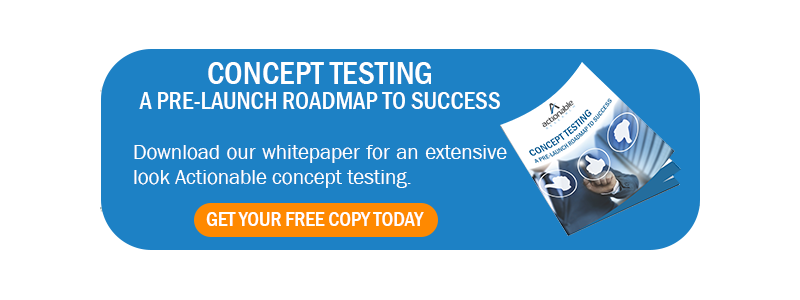By this point in our blog series, we have thoroughly covered the four dimensions of our concept testing methodology:
- Identifying the problem urgency
- Understanding solution fit
- Estimating adoption velocity
- Addressing the market impact
Realizing that each of the four dimensions relies on the feedback from real people looking for the best solution to solve their real problems, it’s essential to consider audience choice as a component of these dimensions. Solid concept testing, using a rigorous, professional research approach, calls for the solicitation of genuine feedback at every stage. But, you must absolutely solicit feedback from the right audience, otherwise you’re wasting or misdirecting your efforts. Although this seems like a “no-brainer,” there are some subtle audience choices to be made that are unpacked below.
Start with the Basics
To begin, start with the basic demographics of your customary target audience. If you are a successful company, you probably already have this nailed. Does your product or service cater to a specific gender, age group, or industry vertical? Easy stuff.
At the next level, you need to be sure that those who will be providing concept testing feedback are representative of your target market. These considerations generally include geography, income, education level, among others. In healthcare, we focus on factors like purchase decision makers and influencers, hospital size, and medical procedure volume. In other B2B businesses, selection criteria may focus exclusively on the purchase decision maker, the end user, or even someone who has influence over the purchaser, especially in the case of small businesses.
In any case, focus on those who might need, buy, or use your product or service. Then take a step back and make sure you are focused, but not too focused. This leads us to our next topic…
A Balance Between Exclusive and Inclusive
You absolutely need to focus on the customers who are most likely to purchase your new product or service, but there is a danger of being myopic when it comes to soliciting feedback. If you are too exclusive, you may be missing feedback from a group who are not current high-value targets, but who MAY BE if your product or service better matches their needs.
On the other side of the equation, there is a such a thing as being too broad. To validate your hypotheses concerning your highest value targets, you need to gather feedback from disparate groups of people to compare and contrast their opinions. You can’t expand your market by selling only to the same people, so you shouldn’t make product decisions only based on the opinions of those same people. Keep in mind, however, that you should not “boil the ocean.” Start with your current hypotheses, expand the list a bit (within reason), and then stop. Unless you have unlimited funds, spending valuable research dollars on respondents with a minute chance of being interested in your product is probably not a wise or fiscally responsible idea.
Are You Missing Anyone?
Lastly, utilize your internal resources (other voices), external resources (publications, opinions, blog posts), and your research partner to make sure you aren’t missing anyone. To be clear, I am not suggesting you be overall inclusive (see previous paragraph), but institutional knowledge can sometimes forget that markets and customer groups change. If you are intent on expanding your market reach you will need to solicit feedback from those outside of your organization, brainstorm with them, and have an honest discussion about the direction you want to go.
This last idea is probably the highest value we at Actionable bring to the table. Although we likely have a breadth of knowledge concerning your industry and product category (our team has a broad industry and educational background), your industry is not our only focus. We are willing to ask the hard questions, actively challenge current hypotheses, and help you identify and define new audiences (or confirm the existing choices).
We Are Ready to Help
We hear “I hadn’t thought of that” all the time. It’s what we do. If you need help choosing your concept testing audience, or any part of the concept testing process, let us know. We’d love to hear your hypotheses, too, and help your business continue to grow.



